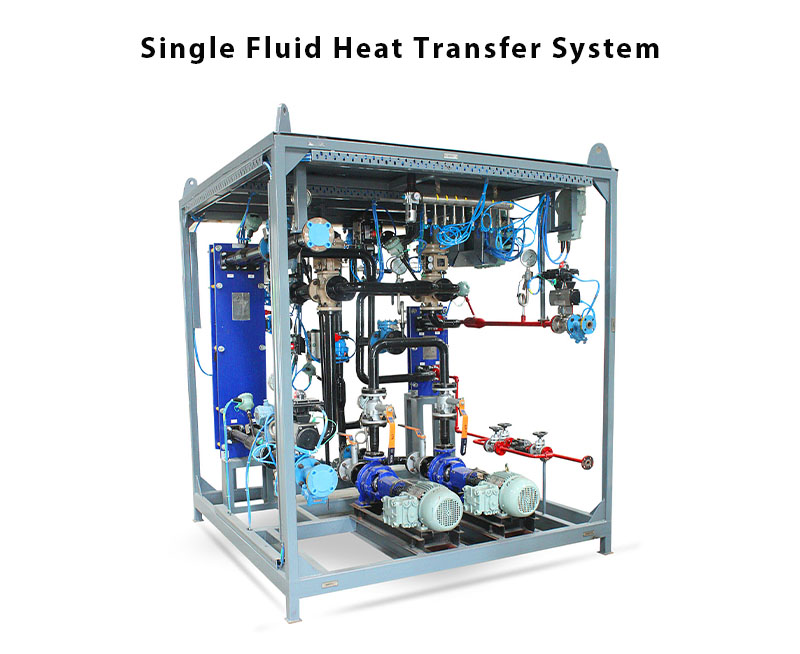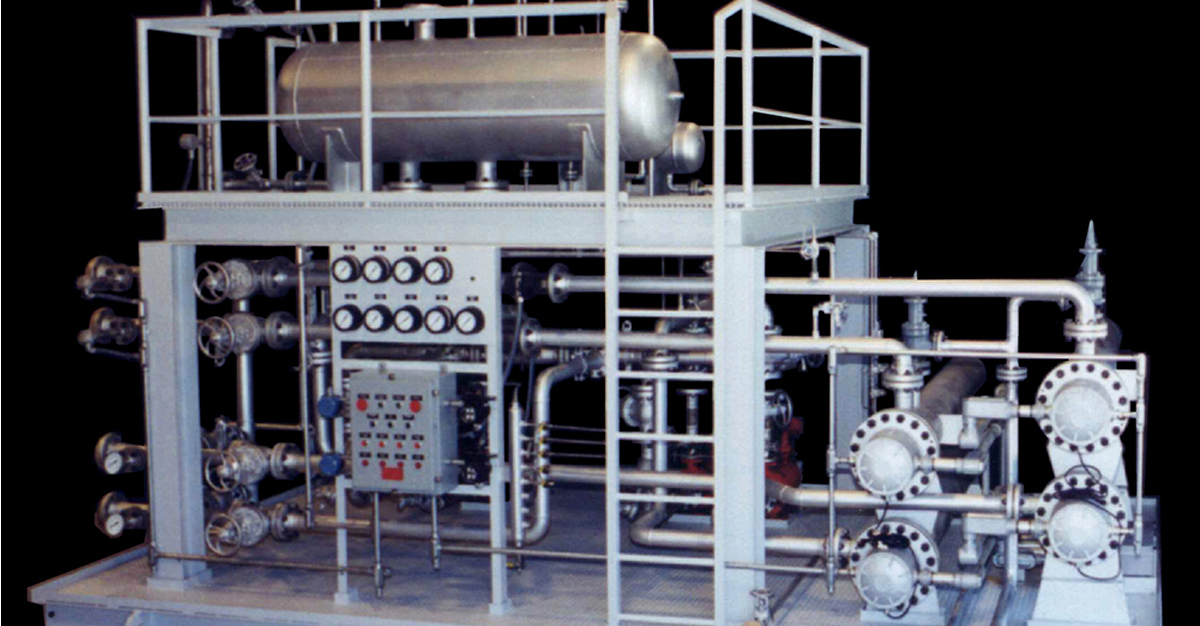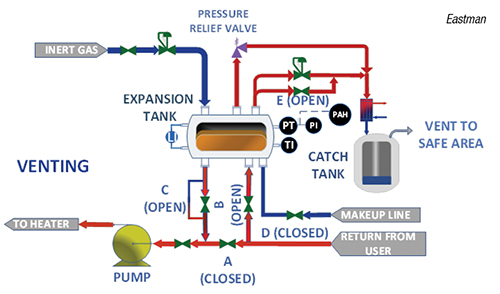Technologies in Heat Transfer Solutions: What You Need to Know for Optimal Efficiency
Technologies in Heat transfer systems are changing performance throughout different industries. Advanced materials like graphene and nanofluids promise substantial improvements in thermal conductivity. The combination of IoT and equipment knowing provides opportunities for real-time tracking and improved power performance. The landscape of thermal administration is swiftly progressing. Comprehending these growths is necessary for achieving excellent system efficiency and sustainability in the future. What particular advancements are shaping this makeover?
Arising Materials for Improved Heat Transfer

Advanced Heat Exchanger Layouts
While typical Heat exchangers have served their objective in numerous applications, progressed designs are now emerging to fulfill the boosting needs for efficiency and performance. These ingenious designs, such as plate, shell-and-tube, and finned-tube Heat exchangers, include boosted surface and boosted flow patterns to boost thermal transfer prices. On top of that, portable layouts enable decreased area requirements without compromising effectiveness. Advanced products, such as composites and corrosion-resistant alloys, furthermore improve longevity and efficiency under extreme problems. Simulation innovations and computational liquid characteristics are increasingly utilized to refine these layouts, ensuring peak Heat transfer characteristics. As markets seek to minimize energy intake and make best use of outcome, the fostering of innovative Heat exchanger layouts is crucial in accomplishing these objectives.
The Role of Nanotechnology in Heat Transfer
Nanotechnology plays a crucial role in boosting thermal conductivity within Heat transfer systems. By controling materials at the nanoscale, scientists have attained substantial improvements in power efficiency. These developments not just maximize performance but likewise add to even more lasting power options.
Enhanced Thermal Conductivity
Considerable developments in thermal conductivity have actually arised through the application of nanotechnology, changing Heat transfer systems across different sectors. By including nanoparticles into Heat transfer fluids and products, scientists have actually attained remarkable boosts in thermal conductivity. These nanoparticles, such as carbon nanotubes, graphene, and steel oxides, enhance the Heat transfer homes due to their high surface location and unique thermal attributes. The resulting compounds show boosted efficiency in applications varying from electronics cooling systems to renewable resource innovations. Furthermore, the capability to customize the size, form, and structure of nanoparticles enables for optimized thermal monitoring options. As a result, nanotechnology remains to play a critical role in the advancement of a lot more reliable and effective Heat transfer systems, leading the way for enhanced commercial applications.
Power Efficiency Improvements

Combination of IoT in Heat Transfer Solutions
The assimilation of IoT in Heat transfer systems introduces the implementation of wise sensing units that improve functional efficiency. These sensing units make it possible for real-time data tracking, permitting prompt changes and optimizations. This technological innovation has the possible to significantly boost efficiency and energy monitoring in Heat transfer applications.
Smart Sensors Application
As Heat transfer systems evolve, the combination of smart sensing units with the Internet of Things (IoT) has actually emerged as a transformative technique. These sensors allow real-time surveillance of flow, temperature, and pressure prices, improving system efficiency and dependability. By collecting and sending data, they promote proactive upkeep, minimizing the threat of system failings. In addition, clever sensing units add to power cost savings by refining operational parameters based on environmental conditions. Their capability to analyze patterns and abnormalities enables educated decision-making, ensuring peak efficiency of Heat transfer systems. As industries progressively embrace this modern technology, the execution of clever sensors stands to change just how Heat transfer systems are taken care of, leading the way for greater sustainability and boosted performance results.
Real-Time Data Tracking
How can real-time information keeping an eye on enhance the performance of Heat transfer systems? By incorporating Internet of Points (IoT) modern technology, Heat transfer systems can take advantage of constant data collection from smart sensing units. This real-time tracking permits instant evaluation of temperature, stress, and circulation prices, enabling operators to determine inefficiencies immediately. Modifications can be made to enhance efficiency, decrease power consumption, and expand tools life expectancy. In addition, anonymous predictive upkeep can be implemented, lessening unexpected downtime and pricey repair services. The ability to visualize performance metrics via dashboards boosts decision-making, promoting an aggressive method to system monitoring. Inevitably, real-time information monitoring not just boosts operational performance yet also adds to sustainability goals within industrial procedures.
Power Efficiency and Sustainability Trends
Energy efficiency and sustainability fads are improving the landscape of Heat transfer systems, driving innovation and conformity throughout numerous sectors. Organizations are increasingly prioritizing energy-efficient designs to reduce functional costs and minimize environmental impacts. The combination of renewable resource resources is becoming more widespread, making it possible for Heat transfer systems to run sustainably while fulfilling regulatory demands. Additionally, advancements in materials and modern technologies advertise lower energy intake and boost overall performance. Lifecycle analyses are likewise getting grip, enabling companies to examine the ecological influence of Heat transfer systems from manufacturing to disposal. This emphasis on sustainability not just supports corporate duty however also placements companies competitively in a market where consumers progressively favor environment-friendly services. Power effectiveness and sustainability continue to be vital factors to consider for future growths in Heat transfer technology.
Advancements in Thermal Administration Solutions
While the demand for effective Heat transfer continues to rise, innovations in thermal monitoring solutions are arising to resolve both efficiency and sustainability difficulties. Advanced products, such as stage adjustment materials and nanofluids, are being established to improve Heat transfer effectiveness - DVS Heat Transfer Systems. These materials improve thermal conductivity and permit far better temperature level regulation in advice various applications. In addition, technologies like active thermal control systems are getting traction, making it possible for real-time adjustments to handle Heat circulation properly. These systems contribute to energy cost savings and decrease the ecological impact of thermal processes. Moreover, the integration of IoT in thermal monitoring assists in surveillance and anticipating maintenance, guaranteeing optimized efficiency and durability of Heat transfer systems. In general, these innovations represent substantial strides towards more lasting thermal management techniques
Future Directions in Heat Transfer Technology
Arising developments in thermal management options signify an encouraging future for Heat transfer innovation. Researchers are increasingly focusing on creating products with exceptional thermal conductivity and boosted power effectiveness. Technologies such as nanofluids, which have suspended nanoparticles, offer substantial renovations in Heat transfer performance. Furthermore, the integration of wise materials that adjust to differing temperature level conditions is obtaining traction, enabling more reliable and receptive systems. The rise of additive manufacturing techniques is likewise making it possible for the style of complicated Heat exchanger geometries that enhance fluid flow. The execution of device knowing algorithms is prepared for to transform the optimization of Heat transfer systems, helping with anticipating maintenance and efficiency improvement. Collectively, these developments are positioned to transform the landscape of Heat transfer modern technologies in various sectors.

Frequently Asked Inquiries

How Do I Select the Right Heat Transfer System for My Application?
Choosing the ideal Heat transfer system entails assessing application requirements, including temperature level ranges, fluid buildings, and effectiveness requirements. Evaluating system kinds, upkeep factors to consider, and cost-effectiveness likewise plays a crucial function in making an educated decision.
What Are the Upkeep Demands for Advanced Heat Exchangers?
Maintenance requirements for sophisticated Heat exchangers usually consist of routine examinations, checking for leakages, cleansing of surfaces, and assuring perfect circulation prices. Complying with maker guidelines guarantees effective procedure and extends the devices's life expectancy.
Exactly How Do Environmental Elements Affect Heat Transfer Performance?
Ecological elements substantially affect Heat transfer efficiency. Variants in temperature level, humidity, and air movement effect thermal conductivity and convective Heat transfer, inevitably affecting system performance advice and demanding factor to consider during the design and procedure of Heat transfer systems.
What Safety And Security Criteria Put On Heat Transfer Solutions?
Safety and security criteria for Heat transfer systems generally consist of standards from organizations such as ASME and ASTM. DVS Heat Transfer Systems. These standards address materials, layout, and functional methods to guarantee dependability, effectiveness, and protection against dangers in various applications
How Can I Fix Typical Heat Transfer System Issues?
Fixing common Heat transfer system issues involves looking for leaks, making sure appropriate liquid flow, examining insulation stability, and validating temperature differentials. Recognizing these aspects can assist keep system performance and stop additional difficulties.
Nanotechnology plays a crucial duty in enhancing thermal conductivity within Heat transfer systems. Significant advancements in thermal conductivity have actually arised via the application of nanotechnology, changing Heat transfer systems across various sectors. Innovations in thermal conductivity with nanotechnology have paved the means for amazing improvements in energy effectiveness within Heat transfer systems. Energy effectiveness and sustainability fads are improving the landscape of Heat transfer systems, driving advancement and compliance across various markets. The integration of IoT in thermal management helps with monitoring and predictive upkeep, guaranteeing optimized performance and longevity of Heat transfer systems.